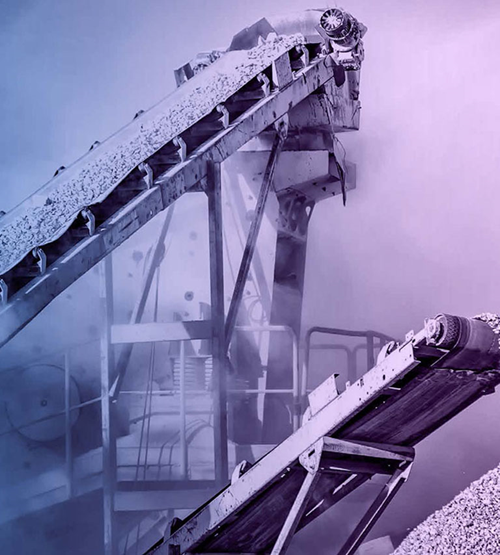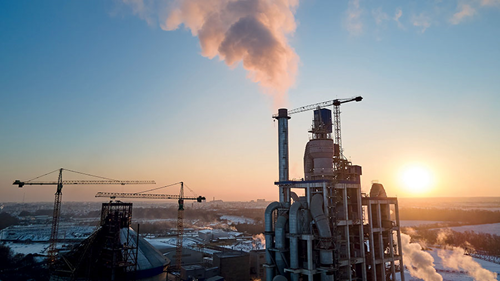

Sustainable concrete: the advantages of admixtures for mixes with supplementary cementitious materials (SCMs)
Mapei's contribution to the concrete industry's commitment to achieve carbon neutrality by 2050
With admixtures of the MAPECUBE line, it is possible to reduce the dosage of clinker and increase the amount of Supplementary Cementitious Materials, or SCMs, in the concrete mixes to produce low carbon concrete (LCC), with performance equivalent to or better than traditional Portland cement-based concrete. The use of these admixtures therefore contributes to the reduction of carbon dioxide emissions associated with concrete production.

On the road to more sustainable concrete
The new LCCAs admixtures
The LCCAs of the MAPECUBE line
The LCCAs in the MAPECUBE line are the result of a multidisciplinary research project launched in the Mapei Research and Development laboratories, in collaboration with the Department of Geosciences of the University of Padua (Italy). This project is aimed at the analysis of the reactions of the hydration process of low carbon footprint binders through the study of hydration mechanisms and the complete characterization of hydration products, with the aim of maximizing their yield and directing them towards the optimal development of resistances mechanical, both in the short and long term. The conceptual scheme of the project, of which the new MAPECUBEs represent the central element, envisages three main areas of action, as shown in Figure 2.
Promotion of clinker hydration - MAPECUBE contains new synthetic "hybrid" compounds, in which organic polymers and inorganic compounds interact to form "nanocomposites" which promote clinker hydration. Thanks to these compounds, larger quantities of hydrated phases are formed, characterized by a better microstructure and, therefore, more durable. The same compounds are capable of early triggering of the pozzolanic reaction, thus forming further quantities of hydration products in shorter times.
Alkaline activation - The presence of alkaline activators favors the dissolution of the SCMs, which release high concentrations of reactive species (silicates and aluminates) into the water of the pores which precipitate in the form of solid phases of calcium hydrated silicates and aluminates, contributing to the early development of mechanical strength.
Limestone activation – MAPECUBE admixtures are able to activate the calcareous filler, which is in itself poorly reactive, forming new carbonaluminate phases which contribute to develop mechanical strengths(4)
The combination of these ingredients with traditional superplasticizers, accelerating and retarding admixtures has made it possible to formulate different MAPECUBE with specific characteristics to optimize the yield of cements based on different SCMs.

Tests and results
The first test shows the development of mechanical strength of LCC concrete made with MAPECUBE 4 (1% in weight of the weight of cement) and CEMIV/AP 42.5R Pozzolanic cement, in which around 20% of clinker was replaced by a mix of Pozzolana and fly ash. A comparison between reference concrete produced under the same conditions with clinker-based cement only (CEMI 52.5R) indicates that MAPECUBE 4 increases strength after 28 days by 16%, in spite of it containing a lower class of cement.
In the second test, the effect of MAPECUBE 3 on a cement mix containing 55% clinker and 40% blast furnace slag was assessed. The results indicate that a dosage of MAPECUBE 3 corresponding to 3% by weight of cement considerably improves mechanical strength at all curing times, enabling concrete with a superior strength class to be produced.
The third test refers to a comparison between a reference concrete (with a cement dosage of 400 kg/m3) and a concrete with a lower cement dosage (350 kg/m3) with 1% of MAPECUBE 60 by weight of cement. The results confirm that, despite the different cement dosages, the two types of concrete have the same final strength. An evaluation of their carbon footprint, calculated using LCA (Life Cycle Assessment) methods, indicate that the concrete with MAPECUBE 60 has a carbon footprint of 333 kgCO2eq/m3 compared with 375 kgCO2eq/m3 for that of the reference concrete, with a reduction of 11.2%.
Lastly, in the fourth series of tests, a comparison was carried out between two types of concrete in which the composition of the binder was varied by mixing CEMI 52.5R cement and blast furnace slag (GGBFS) in different proportions. In the reference concrete the ratio between cement and slag was modified in favour of the cement (CEM/GGBFS = 60/40), whereas in the sample with 1% of MAPECUBE 60W by weight of binder, this ratio was inverted (CEM/GGBFS = 40/60). The results indicate that the concrete with MAPECUBE 60W, at all curing times, is characterised by higher compressive strength with respect to the reference concrete and confirm that the SCMs fraction in cement mixes may be increased without affecting mechanical properties. In this case, the carbon footprint passes from 240 kgCO2eq/m3 for the reference concrete to 179 kgCO2eq/m3 for concrete with MAPECUBE 60W, with a reduction of 25%.

Less clinker, same performances
Bibliography
[1] Global Cement and Concrete Association, “Concrete Future – Roadmap to Net Zero”, 2021, https://gccassociation.org/concretefuture/wp-content/uploads/2021/10/GCCA-Concrete-Future-Roadmap-Document -AW.pdf
[2] R.H. Mills, “Factors influencing cessation of hydration in water cured cement pastes”, 1966, Highway Research Board Special Report, 90, pp. 406-424
[3] G. Ferrari, “Where are admixtures going?”, Keynote at 13th International Conference on Superplasticizers and other chemical admixtures in concrete, Milan, July 13th 2022, American Concrete Institute.
















